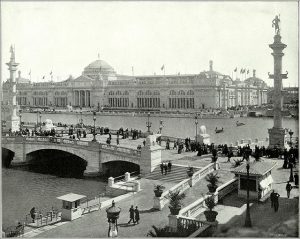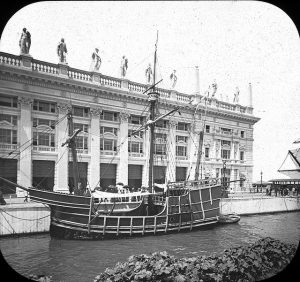It is nearly the end of my first semester as a Public History graduate student. As I reflect on all the things I’ve learned and think about where I most want to make an impact, diversity and inclusion are at the forefront of my mind. Throughout my professional career I’ve gravitated to informal education which has given me the opportunity to explore different non-profit organizations in Austin and San Antonio. I am passionate about working with the under-served community, partly because of my own experiences growing up in the barrio. I come from a family of migrant workers, many of which did not receive a formal education. As an adult, I’ve worked at many places that my parents couldn’t afford to take me when I was a child such as the San Antonio Zoo and the Children’s Museum of San Antonio. Social and economic inequality tend to breed cultural inequality, leading to an unfortunate systematic imbalance.
According to the 2016 National Awareness, Attitude, and Usage Study many museums and other institutions are not sufficiently diverse. Audience diversification is an area that museums need to grow and improve.

The National Art Education Association (NAEA) Museum Education Division and the Association of Art Museum Directors conducted a study on the impact of art museum programs on K-12 students. The study concluded that there are a variety of educational benefits that can be gleaned from visits to museums including questioning, developing multiple interpretations, and engaging the senses. I think this can be applied to a multitude of experiences in other educational institutions. For instance, one can watch a myriad of nature documentaries but nothing really compares to being face to face with a giraffe, playing tug of war with a lion, or being immersed in a tropical habitat with butterflies flying all around you. All of these are experiences that you can have at the San Antonio Zoo but at $18.99 per adult and $15.99 per child for general admission plus extra for interactive exhibits, these are experiences that not everyone will be able to afford.
If you would like to one day work in the museum field, on the job experience is essential. There are many unpaid internships that offer valuable experience in the museum industry. However, if you lack the financial means these opportunities are way too costly to take advantage of. A full time internship is essentially a job without the pay. If the internship is out of town, relocation and living expenses must also be taken into account. The Association of Art Museum Directors (AAMD) is launching a program to diversify the museum landscape by offering paid internships for minority undergraduate students at ten art museums across the country. The project aims to “proactively address the demographic disparity in our industry by recognizing that access to funds is sometimes the biggest hurdle for many people”, according to Madeleine Grynsztejn, the president of AAMD. The program was developed after a 2015 study by the Andrew W. Mellon Foundation and the American Alliance of Museums revealed that “minorities made up 28% of staff in US museums, but non-Hispanic white staff members held 84% of the more prestigious positions like curators, conservators and educators”. The program offers students a 12-week placement with a stipend of $6,300. The students will work alongside mentors and help with educational programs and exhibition projects.
Diversity is also taking different forms outside of traditional venues. People want their stories to be told and they are creating a medium specifically for that purpose. Zines are self-published original works, usually reproduced via photocopier for circulation. Launched from a copy machine in San Antonio, Texas, St. Sucia “tackles Latina feminism on a spectrum far and wide, the inclusive zine showcases a kaleidoscope of experiences, beyond borders and the binary, giving a voice to the underrepresented”. The inclusive zine is now included in university syllabuses for Gender Studies and Chicano Studies at universities across the nation. St. Sucia is made up of Isabelle Ann Castro and Natasha Hernandez, and includes submissions from all over. Natasha emphasizes the importance of giving a voice to Latinx mujeres: “It’s super important to just see yourself represented in the community, to see things are possible. All these things are important for us to feel validated, like we can dream to be all these things”.
This is my chosen profession and I want to work towards this goal of increasing diversity and inclusiveness in museums. Museums should be sites of empowerment, where audiences of all racial and ethnic backgrounds can see themselves reflected. Children’s author Xelena Gonzalez encapsulated this sentiment:
To accomplish this feat, there needs to be reform at all levels to provide sufficient representation in audience and staff at museums and other institutions. I strive to transform the museum from an ivory tower into an institution of everyday life for all.





